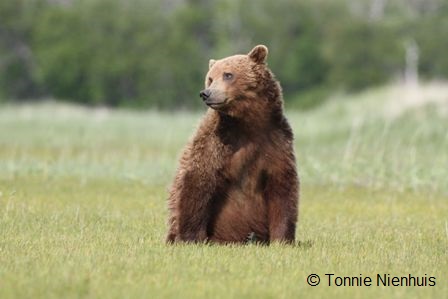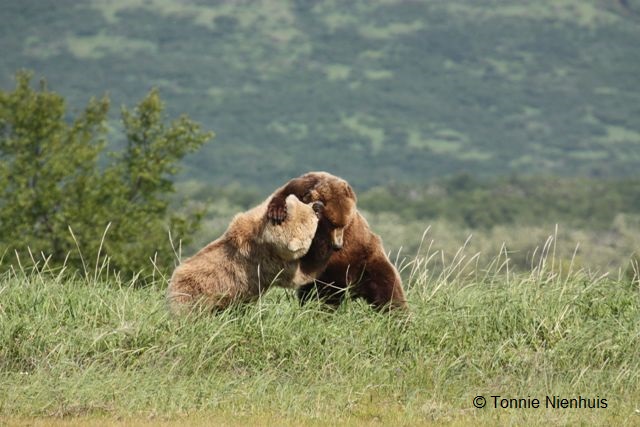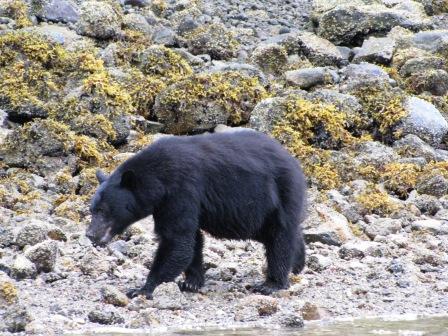Bear watching
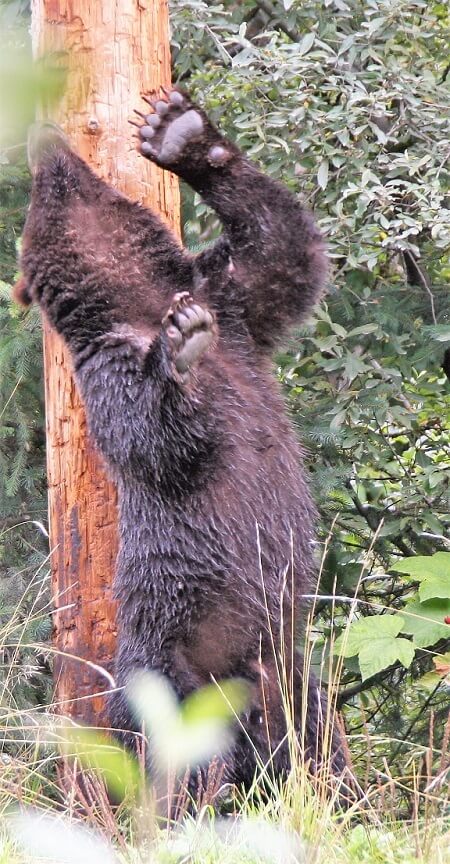 a bear is rubbing it's back
a bear is rubbing it's backBear watching is a highlight for many people visiting Canada.
Others have nightmares when only thinking of an encounter with a bear.
The truth is, seeing a bear can definitely be one of the best parts of your vacation in Canada, as long as you take into account some simple bear viewing etiquette.
Bears are extremely powerful wild animals and very unpredictable. Always make sure your encounter with bears is safe.
On this page:
Several bear species
If you’re lucky you might see one or more bears spontaneously during your travel in Canada.
There are 3 bear species in Canada.
Each of these species has their own habitat and behaviour.
To increase your chances of coincidentally seeing bears, it helps to know what kind of terrain bears prefer in different seasons.
Visit the individual pages for more information regarding bear watching per species.
Watch an experienced guide looking for bears along the BC coast: 'Where the bears are' - BC magazine -
Bear watching etiquette
Bears are generally afraid of people. They rarely attack humans unless they feel threatened or provoked by people. Review these bear viewing rules to avoid dangerous confrontations.
Remember: better safe than sorry!
Never surprise a bear
- You definitely do not want to bump into a mum bear with cubs! As any good mother, she will protect her babies. No matter what!
- Always make some noise when on an outdoor adventure in bear country.
Clap your hands and shout at regular intervals, specifically when your sight is limited. For example when you’re hiking in the forest. - Produce two different sounds a few seconds after each other. Most bears just raise their heads when they hear the first sound. When they hear the second sound, they will be alarmed and usually then run off.
- Bears can pick up human voices from as far as 300 meters/328 yards away. Be aware that specific terrains (such as trails along a white water river) will reduce the hearing distance.
Stay at a safe distance
- Stay at least 100 metres/ 300 feet from any bear.
- Never approach or challenge a bear.
- Resist your urge to get closer for an even better view or an even more perfect picture.
Always give the bear the right of way
- If you spot a bear ahead of you on a hiking trail, stay calm and retreat.
- If retreating is not an option, make a large detour while you stay at least 100 metres/300 feet away from the bear. If the bear hasn’t noticed you, stay quiet.
- Make lots of noise once you are well away from the bear to prevent another encounter.
Stay away from a bear’s food cache
- Bears hide their prey after killing it. They will come back for it some time later. A bear will defend its prey; therefore, you want to stay away from it.
- The smell of a dead animal can indicate the vicinity of a bear’s food cache. Watch out for bear signs and avoid getting closer to the source of the smell.
Unless it is a very hungry bear, a bear seldom sees a human as food.
Never EVER feed a bear!
- By feeding a bear, you learn the bear to associate people with food.
- Fed bears become problem bears as they lose their natural fear for people.
- Bears that have lost their natural fear for people will get bold and dangerous.
- Bold bears visit campgrounds, picnic areas and urban areas searching for food.
- A fed bear often ends up as a dead bear (by a bullet).
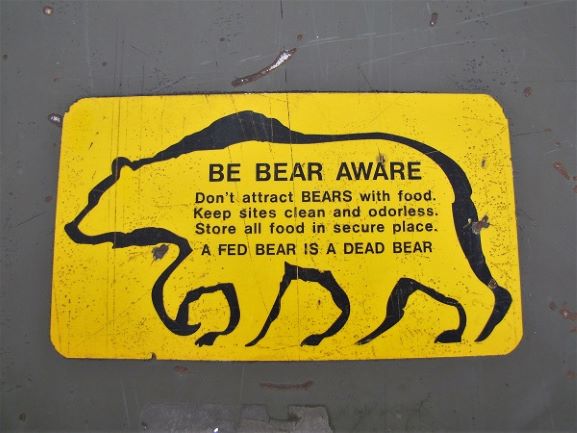 a fed bear is a dead bear
a fed bear is a dead bearKeep scents away from bears.
Bears daily pursuits consist of looking for food. Bears need enough fat reserves to survive hibernation.
- A bear’s sense of smell is approximately 75 times more powerful than a human’s sensitivity.
- Proper food storage is essential! Make sure you don’t attract bears by leaving food unsupervised around your campsite or inside your tent, not even toothpaste and toiletries.
Stay in your vehicle when spotting a bear from the roadside
Bears sometimes feed on berries, dandelions or other vegetation along the roadside.
- Before you decide to stop, always make sure that pulling your vehicle to the side does not impede other road users.
- As bears can run op to 50 km/ 31 miles per hour you want to stay inside your vehicle when bear viewing from the shoulder of the road.
Bear watching tours
If you’re not able to spot bears by good luck, try one of the bear watching tours offered by several outfitters.
Outfitters know the feeding pattern and behaviour of the bears in a specific area. They also make sure you are safe while on a bear watching tour.
Outfitters offering Bear Watching Tours
Your company could be here!
